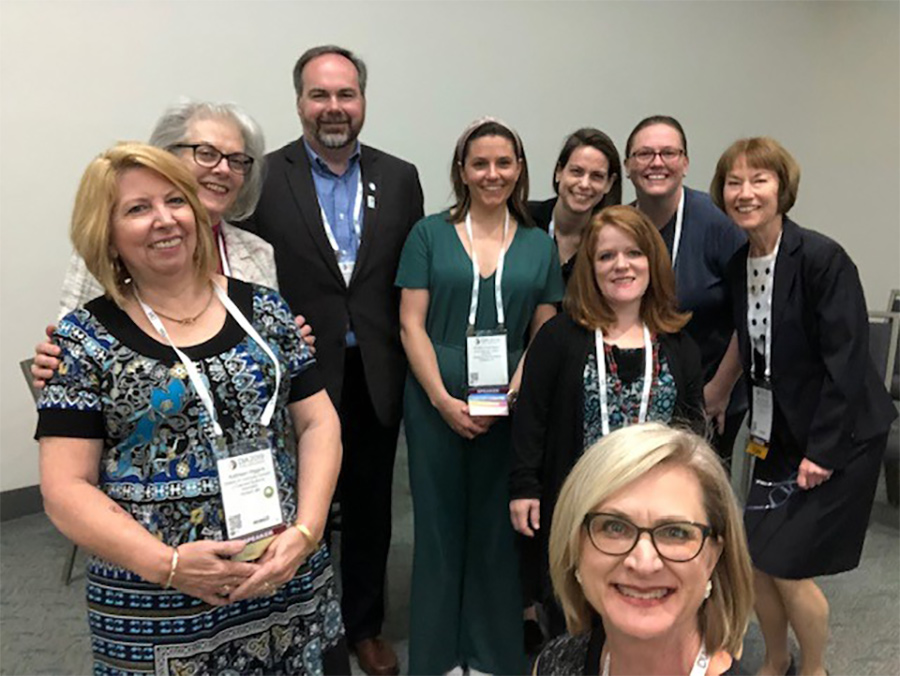Proceedings: DIA 2019 Global Annual Meeting

Patient Advocates In Research (PAIR)
The Kith Collective, LLC
Tuberous Sclerosis Alliance (TSA)
Ultragenyx Pharmaceutical, Inc.
s members of the Annual Meeting Planning Committee, we thank all speakers and audience members for the great ideas and questions generated throughout the Patient Engagement (PE) Track at the DIA 2019 Global Annual Meeting. Sessions included ways to integrate PE into drug and device development, spanning all stages from planning and clinical trial protocols to regulatory considerations, and into post-market models. The momentum on patient engagement is definitely building.
- identify themes and emerging trends when partnering with patients, and expand ways to incorporate patient insights into drug development;
- describe practical solutions to apply lessons from DIA 2019;
- identify opportunities to communicate and share findings across stakeholder groups, promote adoption of lessons, and continue to advance our shared understanding of existing and emerging patient engagement outcomes; and
- discuss implications for the future.

The 2019 Patient Scholars Program kicked off with a lively workshop focused on how Patient Advocate Groups (PAGs) and industry could work better together. Key takeaways from these sessions:
- It takes time to “operationalize” PE into company processes.
- There are differences between patient advocacy and PE.
- It is pivotal to clarify the important roles that patient advocates play during planning and development and in product life cycles that can offer faster trials, with fewer amendments and greater market acceptance.
The next day included sessions on data and registries, fair market value (FMV), and PAG capacity building. Key takeaways from these sessions:
- Learn from smaller tangible projects where patients have informed developers’ decisions on how to more effectively collect, use, share, and disseminate data.
- How to include true patient representatives for different patient populations, cultures, and situations so that we reach the RIGHT patients, including all patients who need specific care.
- Deep dives were taken into several key topics, including:
- Interoperability between various health systems to turn Real World Data (RWD) into Real World Evidence (RWE)
- Understanding the value of disease-specific questions
- Sustainability and diversity of patient registries
- Fostering different types of patient registries that give different types of results
- Legal assistance to help support some PAGs who need this expertise
- The opportunity to de-risk drug development
On the third day, we learned many ways the FDA makes itself available to PAGs and patient advocates, how the FDA connects its initiatives to create a more seamless approach for patients and, what kind of implications exist for use fee agreements. In addition, we also learned about the importance of publishing and sharing PE experiences, successes, problems, and lessons learned. Key takeaways from these sessions:
- Further adopt PE data beyond regulatory filings and label inclusions.
- Leverage actionable insights captured by sponsor companies and use healthcare professionals (HCP) and PE data to create synergistic solutions.
- Consider post-marketing education and needs, including RWE and adverse events.
- Identify missed opportunities regarding natural history and help clinicians build RWD by asking important specific questions of families and patients who aren’t included in study protocols.
Sessions on the fourth day explored the critical role of market access and reimbursement, the importance of early and ongoing interaction, terminology, the roles of industry and PAGs in education, and the scientific aspects of PE. Key takeaways from these sessions:
- It is important to quantify the value of PE, but it is also important to consider patient input in context with the value of gathering input from other stakeholders, such as Key Opinion Leaders (KOLs).
- Ad Boards can, and should, include patient representatives as one type of KOL.
- How to plan with the end in mind: PE should start in translational research and include protocol and informed consent design, building relationships that continue to grow toward product launch.
- Early patient involvement can help identify drug compounds and business development opportunities, and can identify clinical outcomes important to patients, which may differ from outcomes identified by clinicians.
- Most people prefer the expression “patient perspective”, not “patient voice.” Additional words to avoid include:
- “Subject” because patients view it as a verb, not a noun. It can easily be replaced with “participant,” “patient,” or “person” depending on context.
- “Lay” when referring to patient communities, the public, or trial result summaries. It is often redundant, creates an elitist barrier that can put off the very audience one is trying to engage, and there is no definition for “non-scientist” in published dictionaries.
- Toolkits and education are needed for companies, vendors, PAGs, and patient communities.
- New, small, and/or growing biopharmaceutical companies need ROI education beyond FDA and regulatory guidance.
- It is NOT the company’s job to mobilize the community or coach patient communities.
- Patient communities who help streamline drug development should also benefit from reasonable, value-based pricing.
- Patient advocacy is data-driven, consisting of both qualitative and quantitative elements that can offer a return on investment. This concept is sometimes called “return on engagement” (ROE).
- Stigmas that continue to exist regarding industry and PAGs collaboration should be identified and resolved.
- The need remains to clearly define and deal with real Conflicts of Interest.
- Patient preference studies have clear value if done early; they can help direct investments and decisions when clinical efficacy is unclear.
- There is a need to break away from the gold standard COA Clinical Outcome Assessment) to something that represents true patient needs.
As planning for the DIA 2020 Global Annual Meeting begins, we also heard great suggestions for future sessions that indicate the need for more guidance on operationalizing PE. As Lode Dewulf, Co-Editor of the Global Forum PE Track summarized, “The glass is now half-full, but we have to keep pouring.”
Future sessions suggested by audience members:
- More balance between company and patient needs, and how to implement models that are cost effective for all involved.
- Case studies of successful and unsuccessful clinical trials, and how PE could help avoid pitfalls.
- How to represent patients and their communities fairly.
- How PE differs by source (PAGs, social media, vs. vendors).
- Sessions should include more diversity in cultures and more global topics of interest.
- Investigate the spectrum of PE that includes the different types and timing of patient input.
- How the biopharmaceutical industry works with different types of KOLs as compared to consumer/public health and research.
- Learn from the consumer industry on how they learned to include customers as KOLs.
- How to deal with conflict between PAGs and patient communities.
- How to build “design thinking” into drug development that includes PE in a continuous learning system.
- Show examples for and the importance of distributing clinical study result summaries to participants and the public, and learn which endpoints patients want.
- Include the patient perspective in every DIA session next year.
- How to make de-centralized clinical trials work for patients and sponsors.
- How CROs are incorporating PE into their work.
- Planning early so that patients have access to value-based medications and treatments.
Be sure and submit your abstracts for DIA 2020, starting August 1 and closing September 12, 2019. We look forward to your contributions to make effective PE a reality, helping create products that return better value and outcomes for everyone, including patients.

